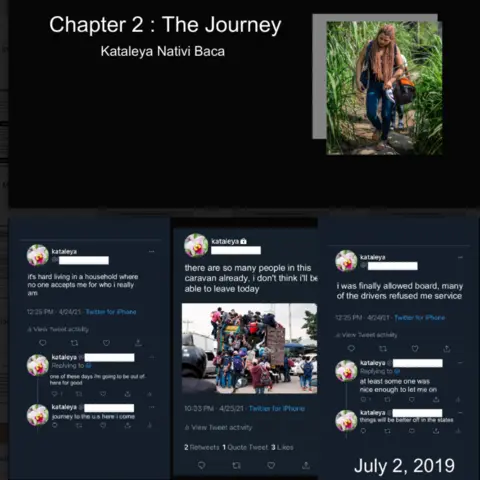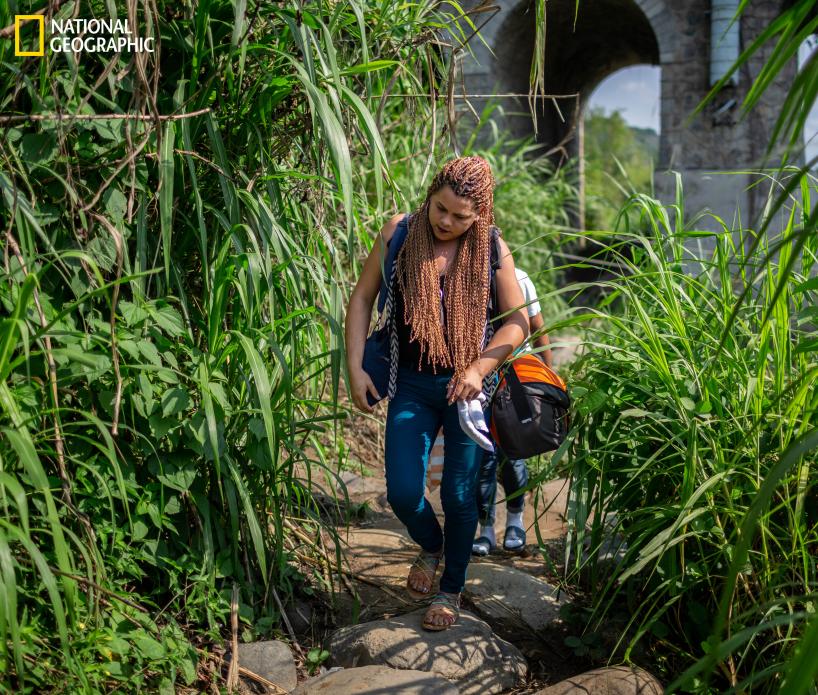This unit was created by Adam Guerrero, an educator in Crowley Independent School District in Crowley, Texas, as part of the spring 2021 Pulitzer Center Teacher Fellowship program on Stories of Migration. It is designed for facilitation across approximately five 60–75 minute live or virtual class periods.
For more units created by Pulitzer Center Teacher Fellows in this cohort, click here.
Unit Objectives:
Students will be able to
- Identify voluntary and involuntary types of migration.
- Explore reporting on stories of migration from various news outlets and using diverse media platforms.
- Explain the economic, social, political, and environmental causes and impacts of migration.
- Compare migration stories on various scales of analysis.
- Engage in student activism regarding migration issues in the form of a letter that they electronically send to a chosen elected official.
Unit Overview:
The story of migration is a shared human experience. Utilizing sources such as “Women on the Move” from National Geographic and The Everyday Projects, students will address the following questions:
- Using scales of analysis, what are the common themes that are seen in migration stories?
- What are the reasons that cause one to migrate?
- In what ways does physical geography intersect with migration?
- Based on your analysis of various sources in the media, how is migration perceived by general audiences?
- Developing social and emotional learning, how do individual and under-reported stories inspire your own activism in regards to migration?
As they engage with these questions, students will be asked to utilize a variety of skills. They will compare and contrast various migration stories on different scales of analysis, analyze sources critically for author’s purpose and target audience, develop critical thinking skills to analyze complex questions that arise from migration crises, and develop persuasive writing skills that inspire letters advocating for an action to address challenges faced by people who are migrating.
The culminating project will include two parts:
- Students will use a Jamboard to create a social media platform that describes the human experience of a female migrant based upon the stories that they read in the Pulitzer Center-supported series “Women on the Move” from National Geographic and The Everyday Projects. Students will address the following questions as they design their Jamboard projects:
- What would these women want us to know?
- What experiences would they be describing?
- How would they reach a large audience?
2. Students will have the opportunity to engage in student advocacy by contacting one of their elected officials and sharing a letter addressing issues surrounding migration.
Five-lesson unit plan, including warm-ups, texts and video resources, discussion questions, activities, slides for each day of instruction, a student work packet for each day of instruction, and performance tasks for the unit.

Summative Assessments:
- Students will use a Jamboard to create a social media platform that describes the human experience of a female migrant based upon the stories that they read in the Pulitzer Center-supported series “Women on the Move” from National Geographic and The Everyday Projects. Students will address the following questions as they design their Jamboard projects:
- What would these women want us to know?
- What experiences would they be describing?
- How would they reach a large audience?
2. Students will have the opportunity to engage in student advocacy by contacting one of their elected officials and sharing a letter addressing issues surrounding migration.
Formative Assessments:
- Students fill out a graphic organizer to track key details from the National Geographic story, “Women on the Move.”
2. Students conduct research about their own families’ histories of migration.
Students will also end the project with a Google Form that they will use to reflect upon their experiences during the unit.
State of Texas TEKS Standards
- WG 7B: Explain how physical geography and push and pull forces, including political, economic, social, and environmental conditions, affect the routes and flows of human migration.
- WH.28B: Explain how historians analyze sources for frame of reference, historical context, and point of view to interpret historical events.
- WH.28C: Analyze primary and secondary sources to determine frame of reference, historical context, and point of view.
- WH.28D: Evaluate the validity of a source based on bias, corroboration with other sources, and information about the author.
- WH.28E: Analyze information by sequencing, categorizing, identifying cause-and-effect relationships, comparing, contrasting, finding the main idea, summarizing, making generalizations and predictions, drawing inferences and conclusions, and developing connections between historical events over time.





